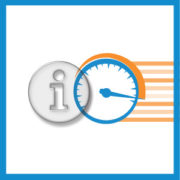The Need for Speed at Nonprofit Organizations
Nonprofit leaders have some unique challenges, but one of the most common and pressing issues to address is that you need to get things done quickly, but also need to get these things done without the resources of your for-profit counterparts. Whether that means creating reports without a large staff, answering donor questions or managing funds without relying on an IT team to write scripts, or simply closing the books each month, you have a lot of work with not much help.
Following our last blog, Five Top Pain Points for Nonprofit Organizations, we would like to share with you some questions you need to ask about whether your current platform can handle the needs of your growing nonprofit.
The Need for Speed: Questions to Ask about Current Financial Processes
Whether its donors and grantors needing immediate reports or simply closing the books each month, everything you do needs to be completed in a timely manner. Ask yourself the following questions:
- How often do other staff members ask you to generate reports or pull budget information?
- How often can you actually pull these reports?
- How long does it take you to generate these reports?
- How accurate are these reports?
- Are these reports focused on the recipient?
- Can your reports look beyond the numbers to find drivers and opportunities?
- Do you have multiple entities?
- If you have multiple entities, how long does it take to bring together all of the information?
- What is the communication process for managing multiple entities to generate a report?
- How much time did it take you to fill out Form 990 this year?
- How long does it take to close the books?
- How many staff members does it take to close the books?
Unfortunately, when you need to jump from financial application to spreadsheet back to financial application and you are just hoping that you transposed the information without error (studies report that 88 percent of spreadsheets have “significant” errors in them), you can’t generate reports that are timely or accurate.
Simply put, if you can eliminate spreadsheets entirely, you reduce the errors and manual processes that come with it.
By automating the reporting process and leveraging technology that can improve the scope and accuracy of reports, you can put more focus into achieving the mission of your nonprofit organization. Build on this by customizing reports with a few mouse clicks (instead of running complicated scripts) to get the answers you need without relying on the help of internal or external IT help.
Shifting into High Gear
When you can break away from inaccurate, time-consuming, and laborious spreadsheet-based processes towards faster and more automated ones, you can:
- Provide your donors with accurate, in-depth information,
- Allow leaders to make informed decisions that fuel growth,
- Save yourself time working in the back office, so that you can focus more on the bigger picture
The need for speed is just one of the many reasons nonprofit financial leaders move away from outdated or underperforming accounting processes and software. In the coming months, we will be exploring some of the most common issues that nonprofit leaders face—integration with other necessary applications, control over accounts payable and expenses, taking control of fund accounting and restricted funds, outcome measures, and much more.
If you are in the process of selecting a new accounting software, we would like to introduce you to Intacct for nonprofits. With a pre-built library of more than 150 reports, including many nonprofit-specific financial management reports, Intacct is easily customizable, works with many other application for nonprofits, and priced to allow you more flexibility.
Learn more about finding success as a nonprofit by reading the free guide, Essential Features of a Nonprofit Accounting System, by watching Financial Reporting: Getting the Full Picture, and by getting in contact with rinehimerbaker for more information.





Leave a Reply
Want to join the discussion?Feel free to contribute!